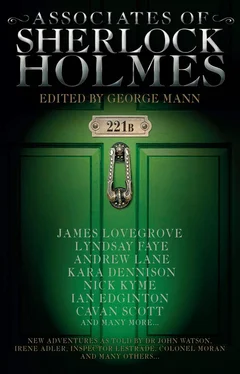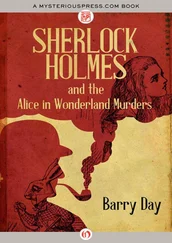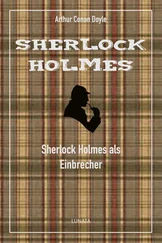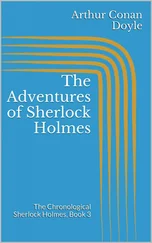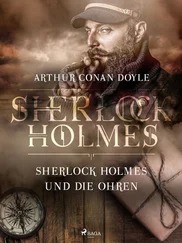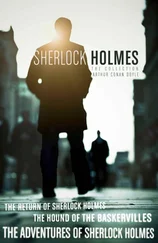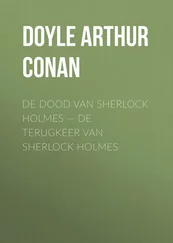George Mann - Associates of Sherlock Holmes
Здесь есть возможность читать онлайн «George Mann - Associates of Sherlock Holmes» весь текст электронной книги совершенно бесплатно (целиком полную версию без сокращений). В некоторых случаях можно слушать аудио, скачать через торрент в формате fb2 и присутствует краткое содержание. Год выпуска: 2016, Издательство: Titan, Жанр: Классический детектив, Детективная фантастика, great_story, на английском языке. Описание произведения, (предисловие) а так же отзывы посетителей доступны на портале библиотеки ЛибКат.
- Название:Associates of Sherlock Holmes
- Автор:
- Издательство:Titan
- Жанр:
- Год:2016
- ISBN:нет данных
- Рейтинг книги:4 / 5. Голосов: 1
-
Избранное:Добавить в избранное
- Отзывы:
-
Ваша оценка:
- 80
- 1
- 2
- 3
- 4
- 5
Associates of Sherlock Holmes: краткое содержание, описание и аннотация
Предлагаем к чтению аннотацию, описание, краткое содержание или предисловие (зависит от того, что написал сам автор книги «Associates of Sherlock Holmes»). Если вы не нашли необходимую информацию о книге — напишите в комментариях, мы постараемся отыскать её.
anthologies, and Titan’s
and
series.
A brand-new collection of Sherlock Holmes stories from a variety of exciting voices in modern horror and steampunk, edited by respected anthologist George Mann. Stories are told from the point of view of famous associates of the great detective, including Lestrade, Mrs Hudson, Sherlock himself, Irene Adler, Langdale Pike, and of course, Professor Moriarty…
Associates of Sherlock Holmes — читать онлайн бесплатно полную книгу (весь текст) целиком
Ниже представлен текст книги, разбитый по страницам. Система сохранения места последней прочитанной страницы, позволяет с удобством читать онлайн бесплатно книгу «Associates of Sherlock Holmes», без необходимости каждый раз заново искать на чём Вы остановились. Поставьте закладку, и сможете в любой момент перейти на страницу, на которой закончили чтение.
Интервал:
Закладка:
In this case it was the discovery of the body of Sergeant Major Lewis Rourke, absent without leave for five days from his Barracks – shot, it appeared, repeatedly in the chest, though not with any projectile from a normal rifle, and – this the matter that encouraged Lestrade to pass the case over to my brother – entirely clean shaven, despite his possession before his disappearance of both a large moustache, and formidable sideburns. No doubt this will eventually appear in print under such an attention-grabbing description as “The Adventure of the Shaved Sergeant” or perhaps “The Case of the Curiously Obsessive Murderer”, for, while to shoot a man more than once may be prudent, to shoot a single body twenty or thirty times suggests an unusual determination to ensure that the body breathes no more.
To give him his due, Sherlock began sensibly enough, delegating Watson – whose military background and medical acumen enabled him to undertake both tasks – to interview the enlisted men at his Barracks as to the character and history of the deceased, and to review the report of the doctor who had examined the body.
This produced the following information, which I can attest is completely true, so far as it goes: the sergeant major was – at forty-one years of age – an old campaigner and had served in India where his bald pate had been tanned by the Indian sun and his complexion had been given a florid hue that might otherwise have suggested drink. Thereafter he returned to serve as a drill sergeant and instructor of new recruits. He was regarded as being a fair man, not without a certain mawkish sense of humour, though still capable of enforcing discipline. Being himself a strict teetotaller, despite his appearance, he was but little inclined to overlook the minor japes and misdeeds committed by soldiers in their cups. Nevertheless he was well spoken of, and even those members of the regiment who had had occasion to be subject to military discipline under him appeared to have no onus for revenge, nor could a motive for his death easily be ascertained. He had been in fine fettle the day before his disappearance, and one of the gunners recalled that the sergeant had received a private letter, which had appeared, from the manner of its reception, to have conveyed good news.
As to the body itself, aside from the shaving of the moustache and sideburns, it showed no injuries other than the wounds to the chest. This was unusual, because of the many impacts and the exceptional accuracy of the marksmanship. The wounds were shallow indents from small-bore grapeshot of the kind used for the sport of hunting birds, one or even a dozen of which would not have necessarily been fatal to a man but which, impacting in great numbers upon a small part of the sergeant’s chest – which had been bared – had produced, cumulatively, a cratered wound from which he had evidently expired, the proximate cause of death being loss of blood.
At this point, if Watson were recounting the tale, there would no doubt be an erroneous theory of his coinage, there to be transcended by Sherlock’s own true account of the crime and the apprehending of the villain responsible. As I am standing in for Watson in recounting my brother’s exploit, perhaps you would care to supply your own surmise at this juncture?
Ha, you know, that’s very Watsonian. You have a surprising talent for mimicry. Your theory is not an impossible one. You suggest, on receiving good news, perhaps of a legacy long wished for but also long pushed to the back of the mind, the sergeant major slipped from his teetotal pedestal – a position occupied most forcefully always by the reformed bibber. Finding him drunk, his men – not wishing him ill, but possessed of that boisterous spirit that can make a man as intolerable in peacetime as he may be invaluable in war – proceeded to shave him, leaving him to wake to the shame of a barefaced hypocrite. So far so good. But how then in this condition would you venture the man came to die? Presumably, you frame it as an accidental demise?
You wonder if I have made any investigation into the forging of birdshot? Obviously it was the first thing to occur to me, as no doubt it was to Sherlock. The round shot is still used in fowling, although before the invention of the rifled barrel and the shell and cartridge it formed the ammunition of our armies as recently as forty years ago. [7] While gun barrel rifling began in the sixteenth century in Germany, the end of smoothbore musket usage by the British Army was considerably delayed. The “Brown Bess” musket was in use until 1838, and the percussion-cap musket that replaced it also did not have a rifled barrel and remained in use until 1851.
I am sure it will not surprise you that the first suggestions that soldiers might fire anything other than a ball from their firearms was rejected by the British Board of Ordinance in 1826 on the grounds that spherical shot had been good enough for the last three hundred years! Such shot is forged by dropping molten lead through a copper sieve, and, as it falls through the air, it solidifies into a perfect sphere. The fall needed is a considerable one, as the spherical shape is formed by the surface tension of the molten metal, and towers for the purpose of this forging exist at many metal works. As a point of interest there is such a tower, [8] Designed by David Riddal Roper for Thomas Malby & Co in 1826, the tower was still in use as late as 1949.
which opened nigh on sixty years ago, at the Lambeth Lead Works between Waterloo and Hungerford Bridges. Well within the distance that a drugged man or a body could be conveyed by hansom cab. As to the method of the inflicting of the singularly uniform and regular injuries then, I fancy we are in agreement.
Your contention then is that his men, in ignorance of the tower’s function but aware of it as a landmark, conceived the idea of leaving the freshly shaved Rourke there, with a view to spying upon his awaking in such incongruous environs, bereft of his military moustache. Returning from a carouse to find him dead, as a result of some random accident sending a fusillade of shot down upon him where he lay, the men then panicked and, swearing their cabbie to secrecy, perhaps with bribes, carried the body to the wasteland where it was discovered and there left it – no doubt quaking in their boots at the thought that this crime might be brought home to them.
So, no doubt, a kind-hearted Watson, inclined always to see the best in mankind, was willing to construe as an accidental result of high-spiritedness what was in actuality one of the vilest and most inhuman crimes to come to my brother’s, and hence my, notice.
The fact of the body being exquisitely positioned to receive the fatal shot, with its breast bared, will not admit of accident.
There are many reasons why a man might shave his own face, from vanity to disguise. There are many reasons why a man might shave the face of another man who will go on living, from the obvious one of being employed as a barber, to the japery you wished to suggest to me. But to shave the face of a man only with the intent of killing him thereafter?
Only three theories occurred to my brother. The first, so as to facilitate the substitution of a bearded brother for a clean-shaven one, he quickly discounted. There was no such person in the case. Rourke was well known to many in the area, and both his superior officers and the men under him identified his body, despite the alterations. He had no dependants, was, so far as his men knew, unmarried, and in the event of his death, his goods were to be sold and the monies sent by a firm of lawyers to distant relatives in Ireland. Thus any question of substitution perhaps in pursuit of the suggestive legacy was ruled out.
The second theory I myself favoured for a little while. I do not know if you are aware, but the presence of certain poisons taken over time can be proven by the subjecting of samples of body hair to certain reagents. As the hair grows out from the follicle it forms a record of the chemical composition of its – ah – native soil. Perhaps because of relative rates of growth, while hair abounds on the human body, the analytical technique is most effective when carried out upon the hairs of the head. Rourke’s baldness has already been remarked; I confess to wondering then if his beard and sideburns might have been removed in order to render less discoverable a cause of death that owed nothing to the impact of the falling shot. Sherlock also went along this blind alley – though for longer than I, working from pure logic alone. He haunted public houses, and discovered that the teetotal Rourke had, with other members of the Temperance League, lectured and argued with the regular drinkers and the publicans alike. In the process – for Rourke, despite his age and his baldness was in other respects a virile and even an imposing figure – he had conceived a friendship with a member of the Ladies League Against Alcohol, one Margaret Athol, on one occasion violently defending her from the attack of several inebriated young men who had taken drunken offence at her characterisation of their behaviour and determined to live down to the description she gave of it. There was an understanding between them, and while not officially engaged, she had given him a lock of her hair to keep, and he – recently enough for it to be of interest to Sherlock – had provided her with, of all things, a scented pillow favour, stuffed with aromatic herbs and cuttings from his own hair.
Читать дальшеИнтервал:
Закладка:
Похожие книги на «Associates of Sherlock Holmes»
Представляем Вашему вниманию похожие книги на «Associates of Sherlock Holmes» списком для выбора. Мы отобрали схожую по названию и смыслу литературу в надежде предоставить читателям больше вариантов отыскать новые, интересные, ещё непрочитанные произведения.
Обсуждение, отзывы о книге «Associates of Sherlock Holmes» и просто собственные мнения читателей. Оставьте ваши комментарии, напишите, что Вы думаете о произведении, его смысле или главных героях. Укажите что конкретно понравилось, а что нет, и почему Вы так считаете.
